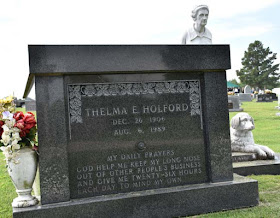On May 4, 1950, a carelessly discarded cigarette started the
Los Tablos fire in the Lincoln National Forest near Capitan, New Mexico. Two
days later, the nearby Capitan Gap fire started with a camper’s fire pit which
was not fully extinguished. Together,
these wildfires destroyed over 17,000 acres of forest and grasslands.
On May 8th, a team of 19 firefighters trying to
contain the blaze were trapped in a small rockslide when 70-mile-per-hour winds
fanned the out-of-control fire around them. Amazingly, although totally
surrounded by fire, the rocks shielded them and everyone made it out alive.
They later said they knew “just how a slice of toast” feels.”
On May 9, a fire crew found a badly singed bear cub clinging
to the side of a burnt pine tree. They brought the frightened and injured cub back
to the firefighter base to see if he could be saved from the terrible burns he
had suffered on his feet, legs and buttocks. They named him “Hotfoot.”
The medics did what they could for him until he was
transported by Game Warden Ray Bell to the veterinary hospital in Santa Fe. As
he was being treated there, the staff began calling him “Smokey Bear.” Later,
after it became evident the cub would survive, Game Warden Bell took him back to his
home where he continued his remarkable recovery. As Smokey Bear grew, he became
something of a ham, begging for snack food from Bell and falling over onto his
back and “crying” if a snack was not forthcoming. Bell also reported he was a
bit domineering with his other pets, a cat and two dogs, who for some reason
didn’t want to argue with a bear.
 |
| Display in the Smokey The Bear Historical Park Visitor Center in Capitan, New Mexico |
Six years previously in 1944, the Forest Service, in conjunction
with the Advertising Council, began a fire prevention campaign. One of the posters
which had been used contained an artist’s rendition of a bear named Smokey The
Bear. The campaign became so popular
after Smokey was introduced that the post office had to give him his own zip
code due to the amount of mail “he” was receiving.
Once the real-life bear had completed his recovery at Ranger
Bell’s home, the Forest Service had him flown to Washington, D.C. There was a
little bit of adventure on the flight when Smokey became a bit upset as the
plane took off, but he soon calmed down. Along the way, one airport refused to
allow the plane to land for refueling when it was learned that a live bear was
aboard, but it was actually a pretty uneventful plane trip.
After arriving in D.C., Smokey Bear was moved into his permanent
home at the National Zoo and Senator Chaves of New Mexico presented Smokey to
the school children of America. Soon, there were large crowds at the zoo who marveled at his story and waited in long lines to see the bear who
survived a forest fire.
 |
| Smokey's grave |
As a result of Smokey’s life, the little town of Capitan,
New Mexico and the rest of the world was changed to some degree. A study was conducted of
school children in America and numerous foreign countries using familiar
slogans to be finished when only the first few words were given. With the words
“Only You,” more children were able to complete “Can prevent forest fires” than
any other motto.
When Smokey Bear died of natural causes in 1976, his body
was returned near to his birth place. He was buried in a beautiful little park
in the heart of Capitan, in the shadows of the mountains where it all began.
 |
| Plaque on Smokey's grave |














































